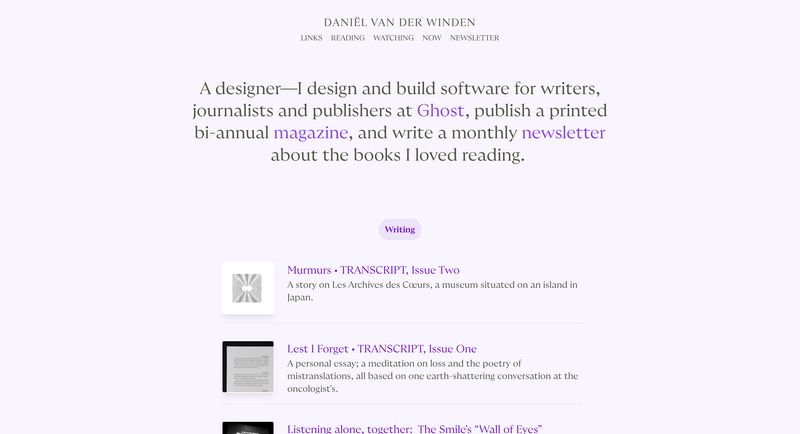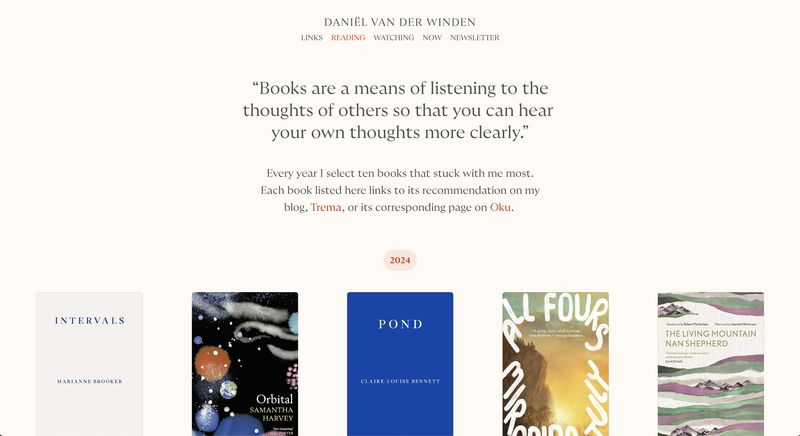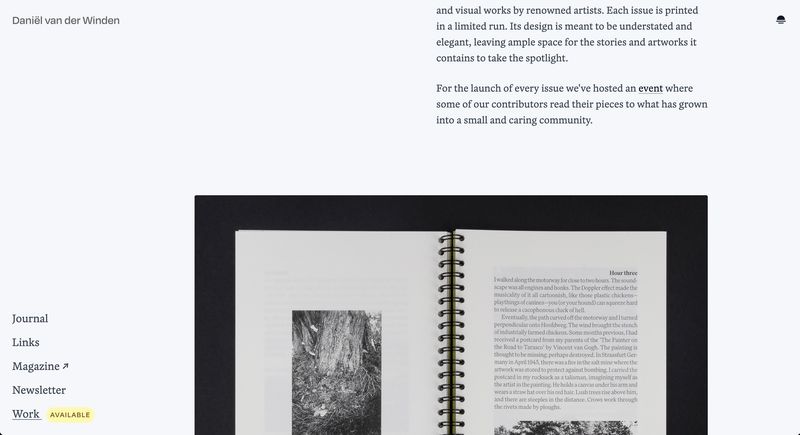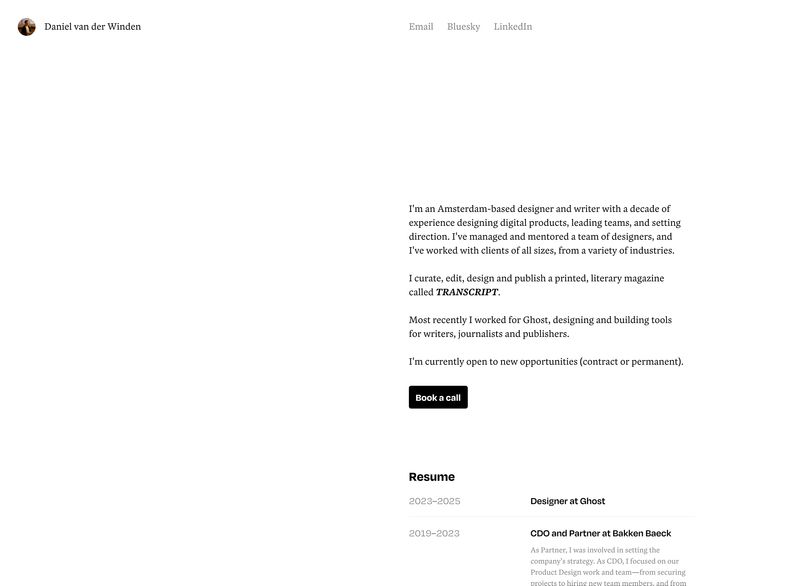On building a home on the web (II)
June 25, 2025The last time I overhauled my website was in February of 2022.
I'd grown weary of the website as a business card that had gotten so prevalent in our industry. With the rise of social media I'd seen many truly personal websites disappear to never return (mine included), and I missed the web of years before.
Through posts like this one by Matthias Ott I learned I wasn't alone—the 1572 Webmentions below it say as much. Many wanted to move away from algorithmic timelines and back to a personal website. To regain control of their own content, to try things, to experiment, to tinker.
I wanted to do so, too, but as I outlined in my previous piece, I felt a little too scared. So intimidated by front-end frameworks, automatisation and optimisation, that the barrier to get started was too high—like opening a large toolbox and not knowing which bit is quite right for the job.
No-code: lowering the barrier
It was around this time that Framer pivoted to becoming a website builder for designers. I'd gotten access to their alpha, and it got me very excited. Here was a simple, canvas-based design tool that allowed me to build a responsive website by drawing rectangles—Figma, but with a publish button. They handed me a nail and a hammer. Easy.


I jumped at the opportunity and created myself a truly personal website. It housed the books I read, the films I watched, and the links I collected. I later added links to my newsletter and a now page. My familiarity with the canvas lowered the barrier significantly. I believe I launched it within two weeks. I kept it up regularly after that, and others referenced it now and again (1, 2).
Shortly after that (or in parallel, or... both—and certainly not by my doing), it felt like the personal web took off again. I started seeing nicely crafted personal websites pop up everywhere (perhaps because I was looking more closely), and I tumbled down a rabbit hole, from blogroll to blogroll.
Getting comfortable coding
Fast forward to 2024: my work at Ghost was in full swing, and I spent a lot of time writing (front-end) code. I learned more about Git, learned to work with Tailwind and, while the markup isn't pretty, it got me back to feeling comfortable building things again.
I'll admit AI (Cursor) helped. It jogged my memory, provided an auto-complete based on our codebase that helped me get acquainted quickly, taught me about CSS standards I wasn't familiar with, and introduced me to React or Ember patterns in such a way that I could get by building the bits of UI I needed to. (Warp helped, too, because it takes [almost] all the scariness out of a Terminal window).
Sometime this year my studiomate Thomas showed me the website he built for NoGood, introducing me to Eleventy. He gave me a quick run-through and—given my recent experience of coding again—I realised I could build something similar. It made me rethink my usage of no-code tools.
See, somewhere along the way I felt like I'd lost control of my Framer setup a little. I regularly had new ideas for things to add to my website, but at this point I was by no means an expert. They'd added many new things over the years—things I hadn't kept up with—and I realised I might be better off getting my hands in the code again. To learn how to build things myself in a way that is more universally applicable, rather than learning how to use one specific user interface.
The no-code tool that initially lowered the barrier for me to create had started to feel too complicated; like I was wielding that hammer while wearing two oven mitts.

Back to basics with a static site
After leaving my role at Ghost I was going to need a new website—one that left a little more room for myself as a professional (as my friend Timon once rightfully pointed out, “you literally have a website about your hobbies”). I decided to build it myself.
I had Warp set up my local development environment. Rather than skimming through technical documentation and messing things up once or twice, its AI-integration helped me set up the right folder and file structure, and allowed me to get creative much faster than I normally would.
I made one quick sketch in Figma (below) and started building immediately after (I had worked on another version a year before, and some of my thinking there informed this version). I'd previously earmarked Martina Plantijn but recently ran into Blanco (I can't remember where), and ran with it. The typeface I use for headlines, Degular, was already on my radar for my newsletter/book blog, Trema. I tested it in combination with Blanco and liked the pairing, so that stayed, too.

I time-boxed my efforts to roughly a week, and while building I discovered People and Blogs, curated and maintained by Manuel Moreale. The websites featured there inspired me to keep things simple. To ship a first version quickly, to keep learning, and to improve things over time. In the end, I deployed the first version nine days after I started.
I discovered Tailwind's typography plugin which makes setting type with Tailwind a lot easier. I got a dark mode implementation going pretty quickly, and learned about content collections, pagination, and automatic image optimisation. I got into the Nunjucks templating engine, which is quite easy to work with, too. I still have a lot to improve (Lighthouse performance scores could be better, RSS is missing, and I need to get into webrings), but I'm excited to do so.
I left a page or two behind to save time. You can no longer find /watching or /reading here (both previously housed three years worth of top 10s for films and books). They were personal pages, yes, but I think my newsletter collection is better suited for sharing my reading. I may bring /watching back later (along with /listening?)—for now, give me a follow on Letterboxd.
Right now, this site feels like a great base. I don't feel intimidated anymore.
I have a nail, and I have my hammer, and I am wielding it.